Gravel is diverging and the best gravel race bikes are designed to go fast off-road, whether in competition or just because you want to ride that bit faster and are not tackling terrain that's too technical.
They are also a good option if you mix road and light gravel riding, because they enable you to keep up a good pace on roads but provide more off-road capability than the best endurance road bikes.
Whereas the best gravel bikes include many all-rounders, there are also bikepacking bikes geared towards loaded off-road travel and gravel bikes designed to tackle more technical terrain.
Gravel race bikes are a different beast. They may lack some of the mounts for bottles, bags and mudguards usually found on gravel bikes. Their geometry tends to be low and racy, and designs increasingly take many of the features of the best aero road bikes, but adapt them to the off-road environment.
Tyre clearance may be lower than on other gravel bikes too, although it will usually still be greater than that of the best road bikes.
Here's our pick of the best gravel race bikes we've reviewed at BikeRadar and some other gravel race bikes to consider.
Later, there's more info on what defines a gravel race bike and what to look for when choosing a fast gravel bike.
Best gravel race bikes in 2024
Canyon Grail CFR Di2
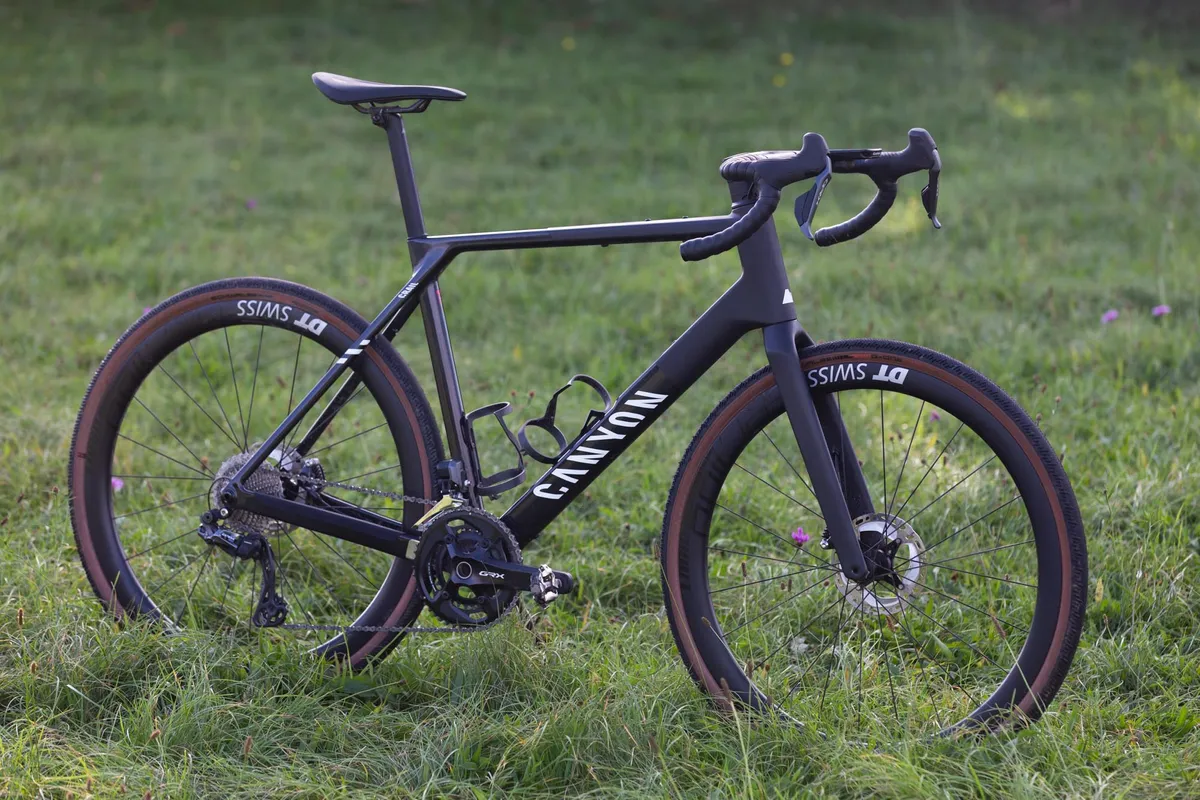
- £6,699/€6,999/AU$10,599 as tested
- Pros: Calm and confident; well-designed storage; adaptable
- Cons: Slightly fragile tyres; mounts for regular mudguards would be preferable
In October 2023, Canyon released an updated version of its Grail, transformed from a do-it-all gravel bike to a gravel race bike.
Jack Luke describes it as one of the best-handling gravel bikes he has ever ridden, proving surefooted at speed without being dull on slower terrain, and with a geometry that's suited to its racing intentions.
The bike comes with integrated down-tube storage, which is genuinely useful. It features a suite of accessories, including a frame bag and quick-release mudguards, elevating it above the competition and adding versatility.
On this build, the tyres are slightly fragile, but that is befitting for a gravel race bike.
Lauf Seigla Weekend Warrior

- £3,890/$3,990/€3,790 as tested
- Pros: Added comfort from Grit fork, great geometry, big clearance
- Cons: MTB-spaced bottom bracket limits crankset choice, some bobbing when climbing
The Lauf Seigla's distinguishing feature is the Lauf Grit gravel suspension fork. This adds 30mm of front-end travel that, along with the frame compliance, helps significantly with ride comfort.
The fork bobs a little when climbing, but adds composure to descending. The bike is 1x-only and uses an MTB bottom bracket shell width, which means crankset options are limited, although this does offer space for 700c wheels with tyres up to 2.25in.
Vielo V 1 Strato SRAM Rival AXS XPLR
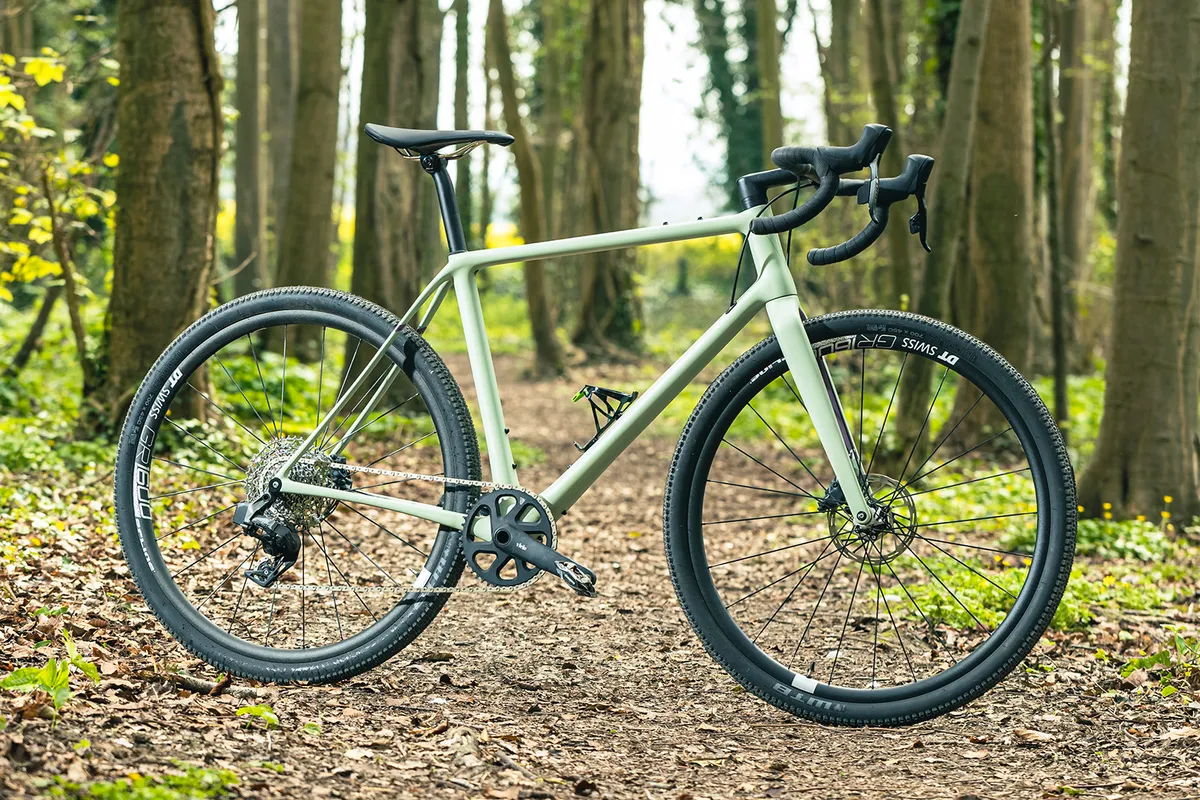
- £5,299 as tested
- Pros: Great looks, wide clearance, fast ride
- Cons: 1x-only, some seatpost slippage
The geometry of the Vielo V 1 Strato and the frame weight are close to a road bike, but there's space for 700c or 650b 50mm tyres. Along with a compliant frameset, that adds plenty of smoothing of jarring surfaces.
The bike has a great aesthetic and finish, and is purpose-designed for 1x drivetrains. Despite its road-like performance, the Vielo V 1 Strato is comfortable thanks to wide tyres that help to fend off surface vibrations.
3T Exploro RaceMax
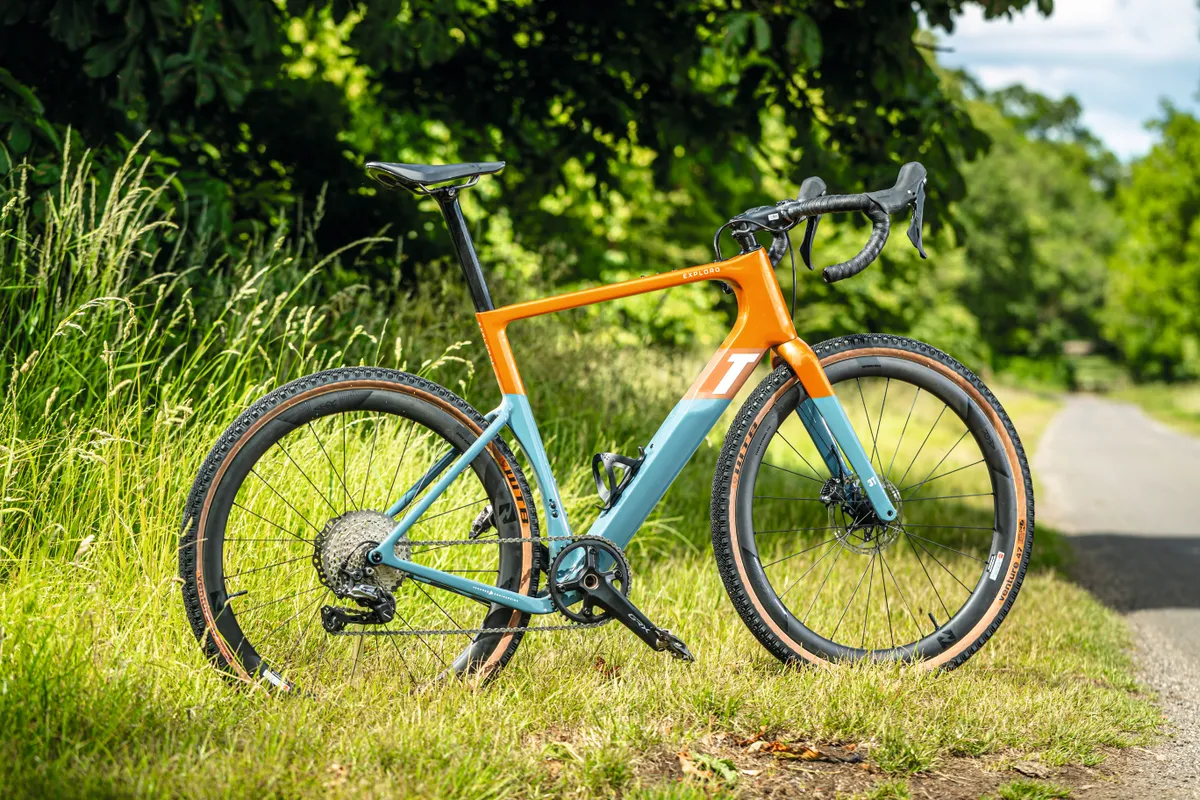
- £3,849 as tested
- Pros: Versatile; aerodynamics tuned for gravel riding
- Cons: Stiff ride; expensive for the spec offered
The 3T Exploro was an oddity when it was launched: "why does a gravel bike need to be aero?" people asked.
Now aero features are normal on the best gravel race bikes, but the 3T Exploro RaceMax is still an option that offers a fast ride and plenty of versatility. You can fit 700c wheels, although you're then limited to 35mm tyres. Swap to 650b wheels and clearance balloons to 57mm though. You can also go either 1x or 2x.
It's also stiff and responsive, which is good for gravel racing, although you're paying extra for the bike's rarity.
Basso Palta

- £5,199/$7,560/€5,164 as tested
- Pros: Agile lightweight frame; fast ride on smooth gravel
- Cons: Not the grip for muddier off-road
Basso is on its third fast gravel bike design with the Palta. It has the looks of an Italian race bike, sporting a stylish, slender, light aero frame with 45mm tyre clearance and concealed cabling.
The Palta frame weighs just 960g, while the skinny fork is even lighter at 270g. A build with lighter components should yield a significantly lower weight than the 8.7kg of the size XL test bike.
Clever details include mini-tools inside the thru-axles, while we rated the finish quality. Geometry is between fast endurance and gravel, and the frame is stiff and responsive, lending itself to fast riding on firmer ground.
Canyon Grail CF SL 7.0
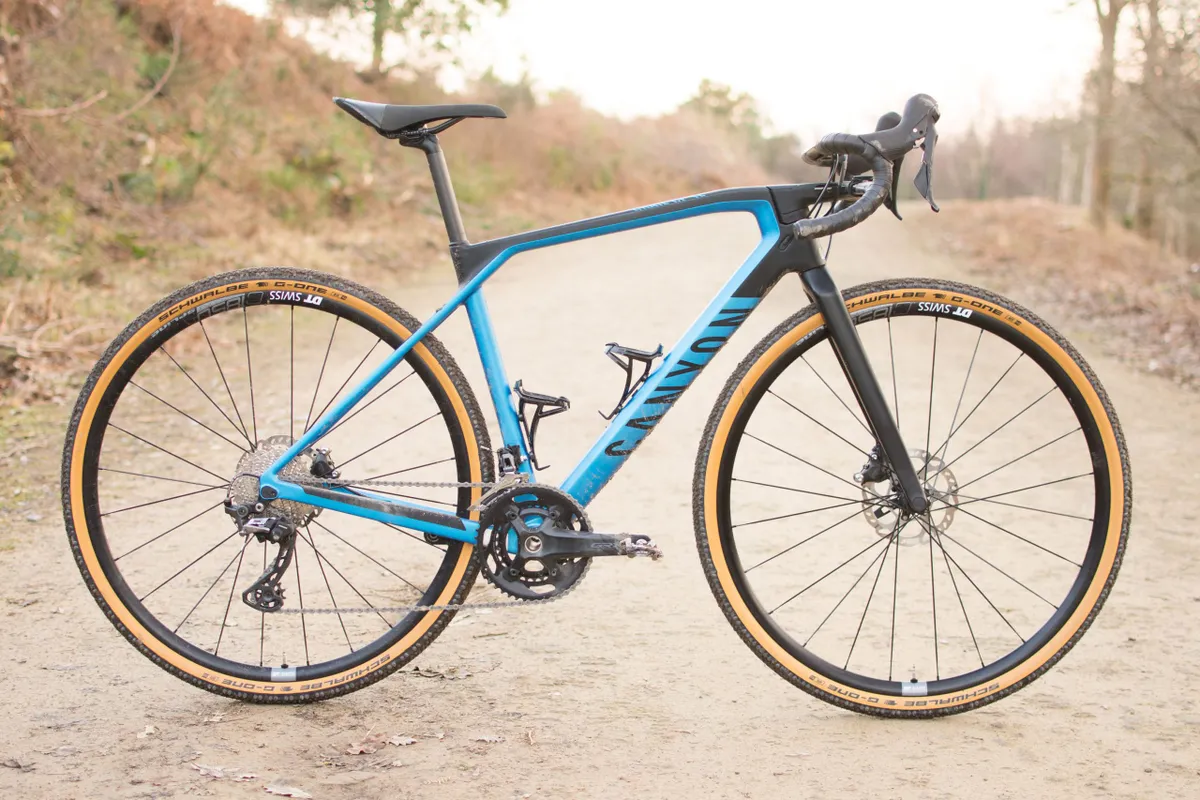
- £2,649/$2,699 as tested
- Pros: Excellent spec, novel bar design does work
- Cons: Non-aero frameset, bars bring fit issues
At the bottom end of Canyon's carbon fibre Grail range, the CF SL 7.0 has racy looks and ride position, and clearance for tyres up to 40mm.
As with all of Canyon's bikes, the spec of the Grail CF SL 7.0 is first-rate value, with 2x Shimano GRX mechanical shifting and quality DT Swiss wheels. We've also reviewed the even more nicely equipped Grail CF8.0 SL eTap if you're looking to spend more.
The double-decker bars divide opinion and the one-piece cockpit removes adjustability, but the suspended bar tops really do work to stamp out gravel chatter.
Cervélo Áspero Rival XPLR eTap AXS 1 Disc
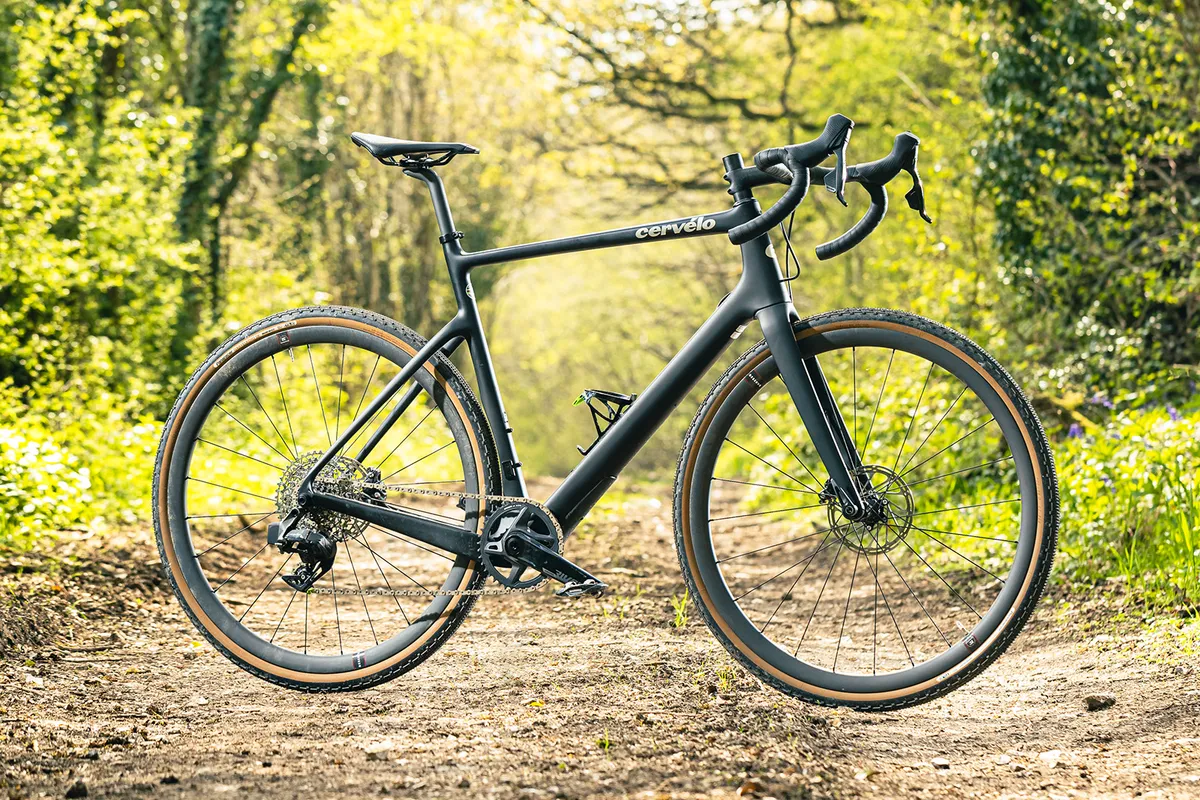
- £5,500/$5,500/€5,700 as tested
- Pros: Lightweight, agile and fast
- Cons: Stiff frameset; pricey
The Áspero carries Cervélo's aero road bike expertise to a gravel race bike, with a stiff frame that leads to fast progress on smoother gravel, although the stiffness does make bumpier terrain a little tiring.
We reviewed the lower-spec frame Áspero, but the newer Áspero 5 ups the ante with an integrated cockpit and aero seatpost.
Both bikes get a fork with an adjustable dropout, so you can fit 650b wheels in place of 700c without affecting the geometry or the ride quality.
Pinarello Grevil F
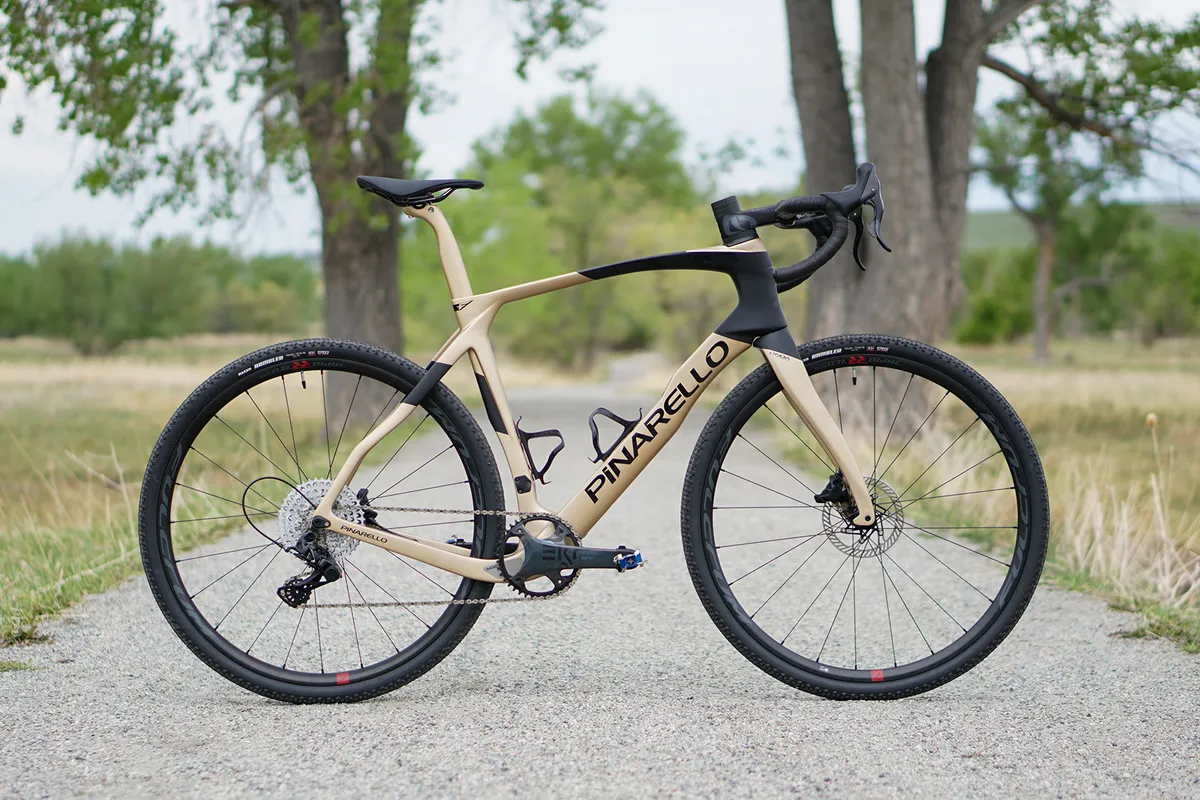
- £5,300/$6,500/€6,100 as tested
- Pros: Racy geometry; stable at speed; big tyre clearance
- Cons: Low wheel spec for the price
Another bike with a design that's spilled over from the road, in this case the Dogma F raced by Team Ineos, the Grevil F has Pinarello's distinctive asymmetric frame, but adds the space to fit 50mm tyres.
The bike includes a one-piece cockpit with internal cable routing, and is fast and stable to ride. We were disappointed the Grevil F didn't come with higher-spec wheels, though; you'll need to factor in the cost of a new carbon gravel bike wheelset to get the best out of the Grevil F.
Scott Addict Gravel 30

- £2,600/$3,000/€3,000/AU$4,500 as tested
- Pros: Very fast-riding; aero design; plenty of integration
- Cons: Heavy wheelset; not so good on more techy terrain
Scott's base for the Addict Gravel is yet another pro road race bike, the Addict RC. It includes many of the features of that bike, with an aero frame and the same integration and internal cable routing.
The ride position isn't quite as low as the Addict RC, although it's more aggressive than many gravel bikes, and there's clearance for 45mm tyres.
The bike is a very fast ride on open, straight gravel roads, but not so good once it gets technical. An upgrade to the wheels could remove significant weight.
Specialized S-Works Crux
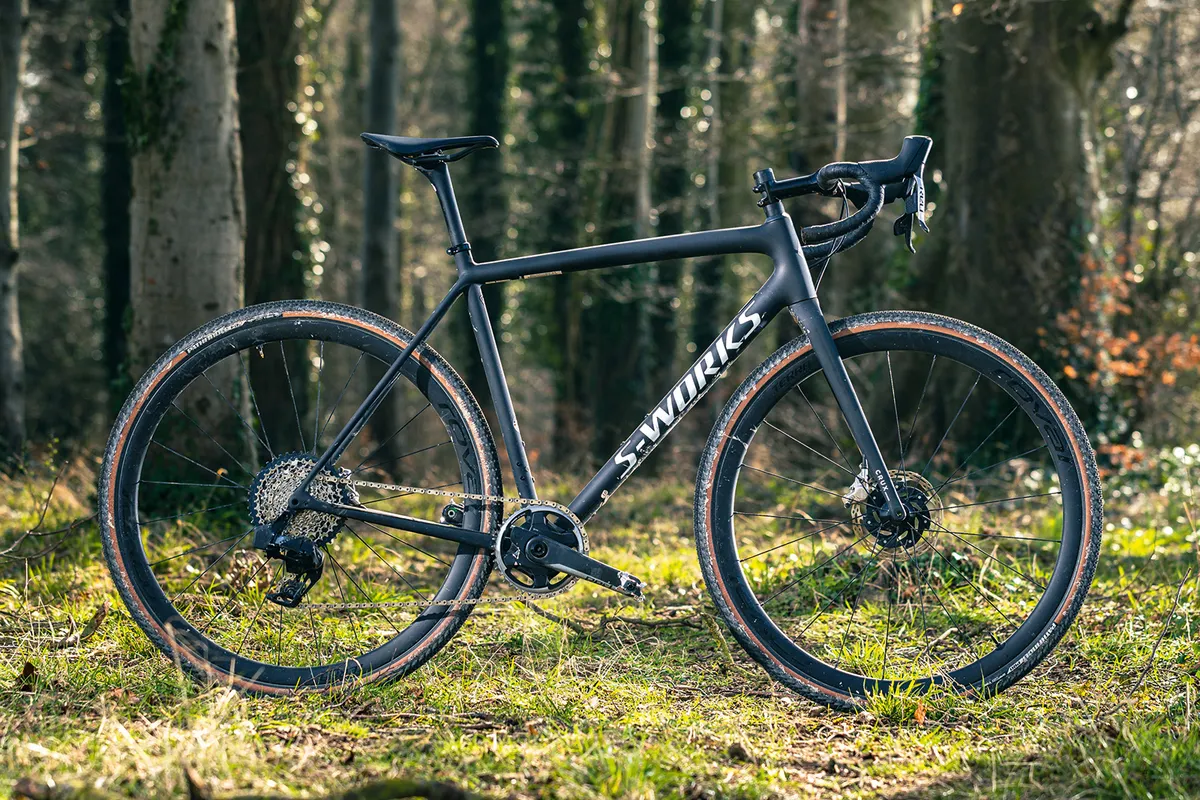
- £11,300/$12,250/€12,500/AU$18,000 as tested
- Pros: Super-light 7.3kg build; wide tyre clearance
- Cons: Very expensive; very stiff; not so good when it gets technical
The Specialized S-Works Crux weighs less than many road bikes, but doesn't sacrifice on frame stiffness, leading to a bike that flies over smoother gravel, climbs superbly and is agile, although it's not so good on rough terrain and technical descents.
Nevertheless, you can fit 650b wheels with 2.1inch tyres, which might smooth things out. Above all, the Crux is for racing, although the external cabling may lose you a few watts over an integrated cockpit. It's hugely expensive for a bike that's going to get dirty.
Specialized Diverge STR Expert

- £7,500/$7,500/€7,550 as tested
- Pros: Lots of saddle comfort; versatile
- Cons: Fiddly setup; low-value spec
The Diverge STR adds rear suspension to the Future Shock front suspension of the standard Diverge, for a bike that offers plenty of rider comfort. Add to that a geometry that's good for a variety of off-road action, including gravel racing, and you've got a bike with plenty of versatility.
The setup process for the rear end is fiddly though and the expense of the frame's design means you get a mediocre spec for the bike's price. The odd looks may put some off as well.
Also consider...
BMC Kaius 01 One
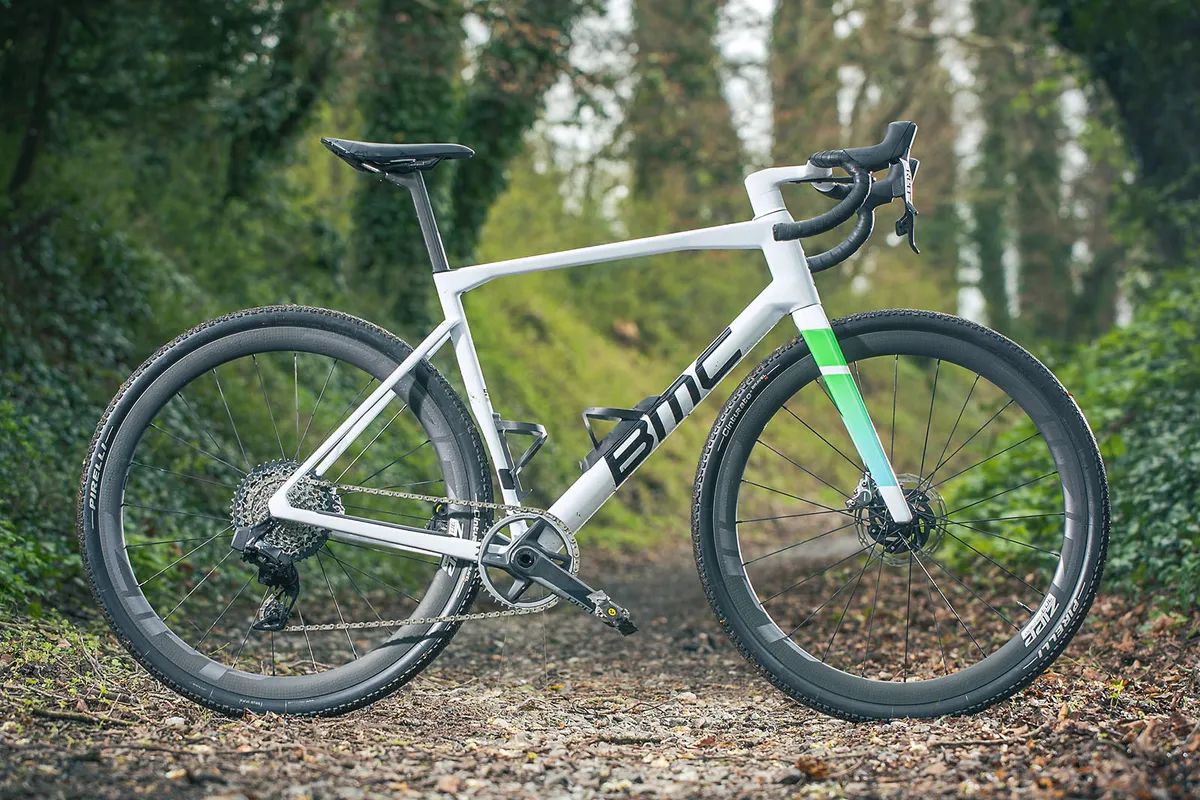
- £11,300/$12,000/€11,500 as tested
- Pros: Very fast on easier gravel and the road
- Cons: Expensive; harsh ride on more difficult terrain
Even more expensive than the Specialized Crux, the BMC Kaius has the gravel racing palmares, with Pauline Ferrand-Prévot winning the inaugural women's gravel world championship on the bike.
As you'd expect then, it's fast. It's also light, stiff and aero, with a geometry that's akin to a road bike. That leads to road-bike like speeds on easier surfaces, but the ride turns quite brutal and becomes difficult to tame on more technical terrain.
Factor Ostro Gravel

- £9,500/$9,900 as tested
- Pros: Rapid; stiff; responsive
- Cons: Firm ride; road-bike like geometry
Another road-bike derived fast aero gravel bike, the Factor Ostro Gravel inherits a responsive road-bike like geometry and a firm ride from the Ostro VAM pro-level road race bike. The frame has a claimed 900g weight, making it one of the lightest gravel race frames available, but there's still space for 45mm tyres.
The road bike heritage of the Ostro Gravel makes for a fast ride, even over poor surfaces, and it handles jarring hits well. A common theme for gravel race bikes, the Ostro Gravel soon comes adrift on more technical trails though.
Buyer's guide to gravel race bikes
What is a gravel race bike?

As its name suggests, a gravel race bike is designed to go fast and beat the competition.
Gravel racing is taking off worldwide and is particularly popular in the States, where there are plentiful roads that haven't seen tarmac.
Many gravel races cover really long distances; the flagship gravel race, Unbound, which takes place in East Kansas, is 200 miles long, but it offers distances up to 352 miles for the determined.
That calls for bikes that are fast, but also offer wide clearances for wider tyres and enough comfort for a race longer than 10 hours. Gravel race bikes often don't take quite such wide tyres as other gravel bikes, however.
Aerodynamics also come into play, so the best gravel race bikes increasingly offer aero frames.
Features including extra mounting points are often sacrificed in favour of a faster ride.
Gravel race bike geometry
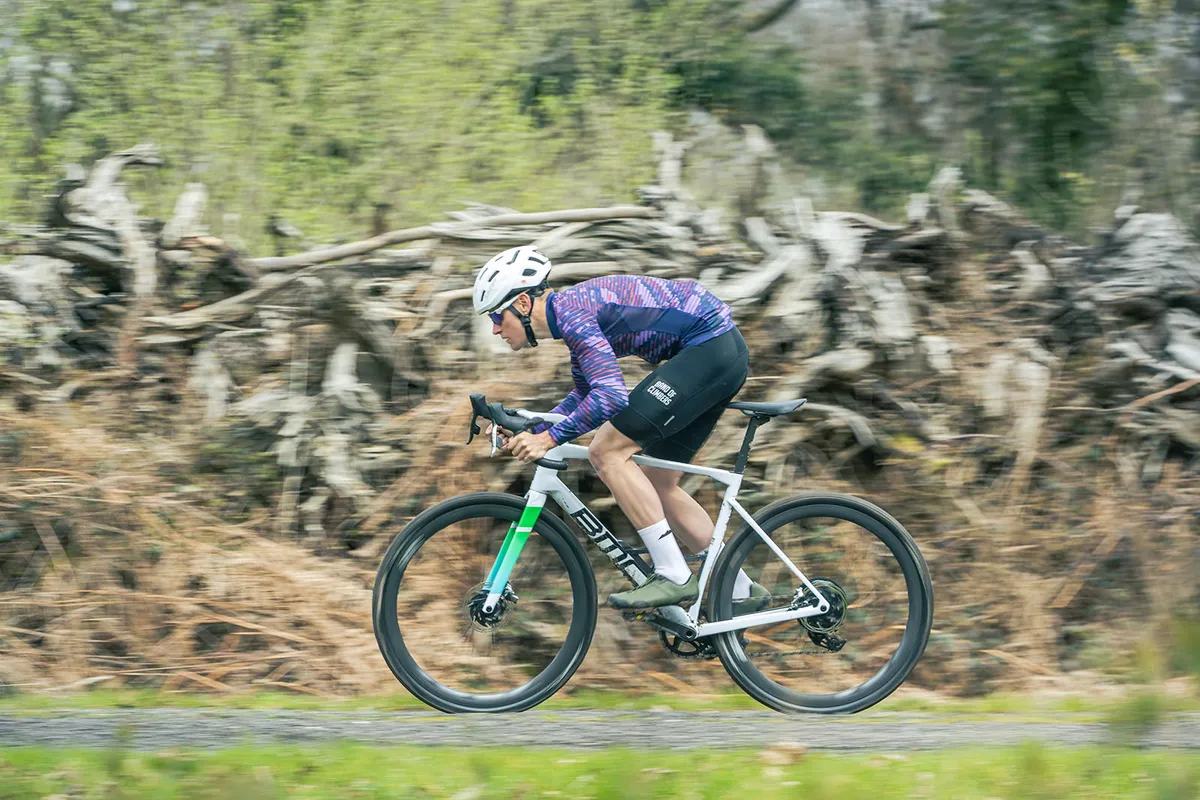
The frame geometry of a gravel race bike often approaches that of a fast road bike. As with a road race bike, with the rider contributing much of the air resistance, a long and low ride position can add an extra turn of speed.
The frame angles may be more relaxed than a road race bike though, with the head tube angle and fork trail in particular lowered to add more stability. Although gravel racers are riding fast, they need the ability to tackle obstacles and descend with confidence.
Look through our reviews above of the best gravel race bikes and you'll find the compromises from the road-like geometry manifest themselves in repeated reports of bumpy rides and awkward handling on harder terrain. Gravel race bikes often forego comfort and balance in favour of speed.
If you're okay with that, fine. But if not, take a look at our wider picks of the best gravel bikes for something that's less compromised on technical trails.
Gravel race bike components
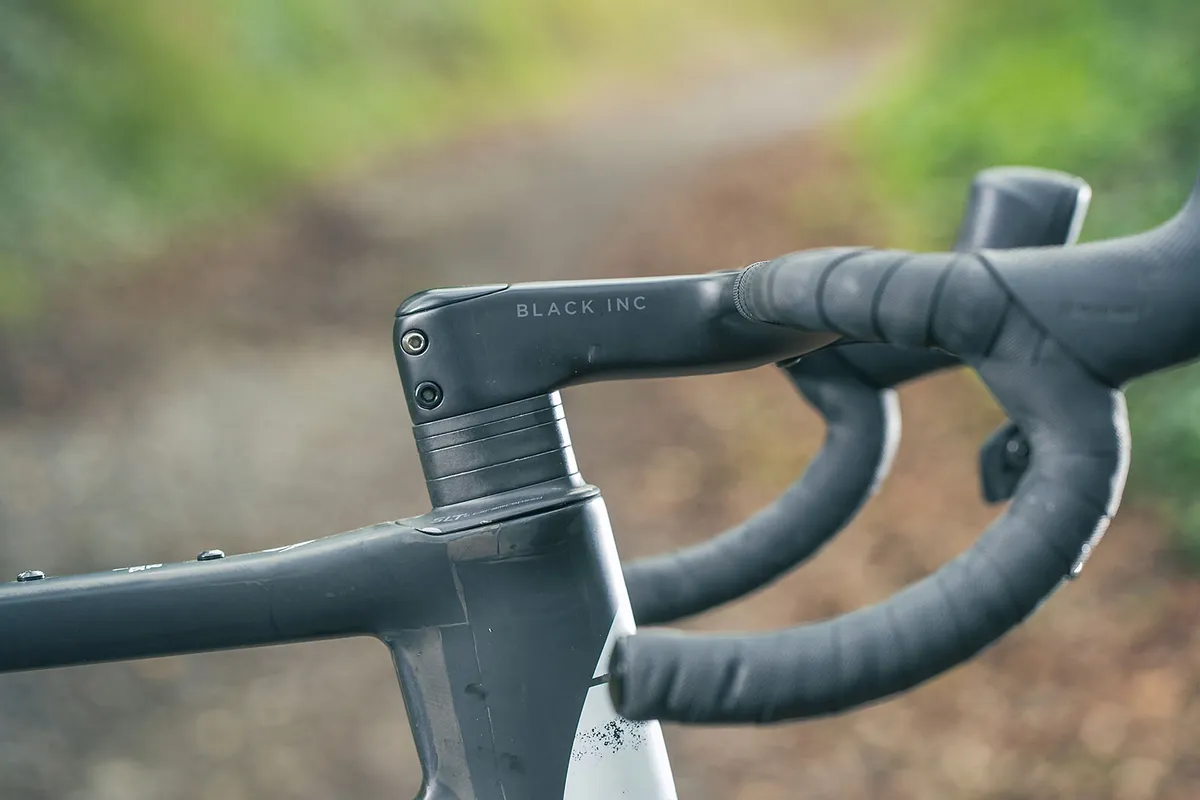
Gravel race bikes often borrow features from the best aero road bikes. That includes front-end integration, with many gravel race bikes featuring one-piece aero cockpits.
These may be faster, but they do remove adjustability, so you need to make sure you're comfortable with the bar/stem's reach, width, drop, flare and hand position when buying. A change can be expensive.
Cables and hoses are increasingly disappearing into the bars, stem and frame as well. With all the major groupset brands now offering wireless links from the shifters to the derailleurs, it's usually only the brake hoses that need to be routed through the frame.
Many gravel bike racers opt for clip-on aerobars to add another ride position, that's lower and gives their hands a rest. These were banned for elite competitors at the 2023 Unbound Gravel, but if you think you might want to use them, make sure you can find a set that will fit to your bars.
With aero frames come aero wheels, so most gravel race bikes are equipped with aero gravel wheels. If a bike doesn't come ready-fitted with them, prepare to spend extra on a set of the best gravel wheels.
The best gravel bike tyres for gravel racing are likely to be lighter in weight, faster-rolling and with less beefy treads. That's fine if everything is dry and solid, but can catch you out if your race includes prolonged muddier sections or it's been raining.
As with cyclocross races, be prepared to swap out your tyres for a set appropriate for the conditions. Consider running a mixed set, which might give you a good balance of grip and speed.
Gravel race bike gearing
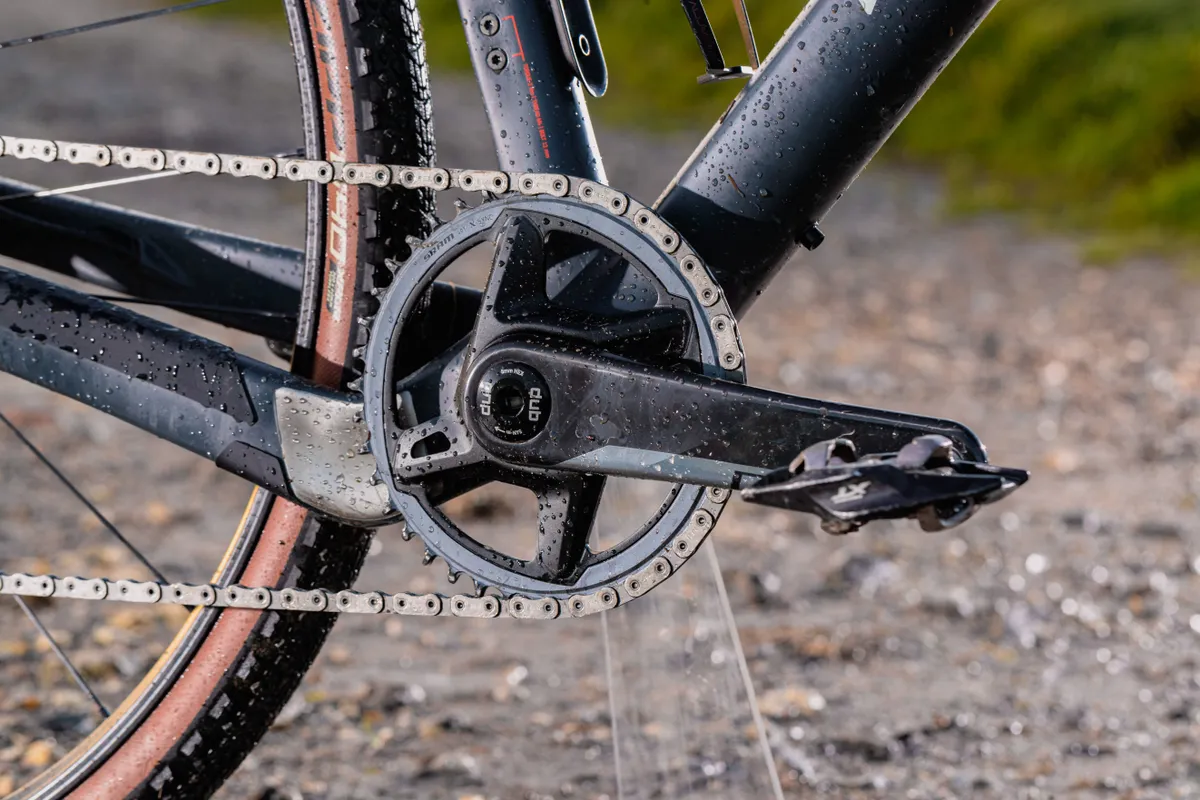
If you're riding at close to road bike speeds a lot of the time in a gravel race, your gearing needs to offer enough top-end to keep that up at a manageable cadence.
Gravel races often include more technical sections and ascents though, so low gears are also important. As with other gravel bikes, gravel race bike gearing may go below 1:1 to help you keep riding.
This means the best gravel race bikes usually offer a wide spread of gears from a gravel bike groupset such as Shimano GRX or SRAM's X-Range gearing. You may find a compact 50/34t crankset in place of the super-compact cranksets more usual on all-rounder gravel bikes.
Don't assume all gravel races take place over smooth, mud-free surfaces either. Returning to Unbound 2023, a muddy section close to the start led to many riders having to dismount and clear their drivetrains and wheels.
A 1x setup may offer fewer gears than a double-chainring groupset, but it covers much the same range and should help avoid some of the clogging issues of a 2x groupset, maybe providing a winning advantage.
Therefore, 1x setups such as SRAM XPLR are a popular choice on gravel race bikes. They may be more aero too. Some competitors run aero single chainrings for an extra turn of speed.
